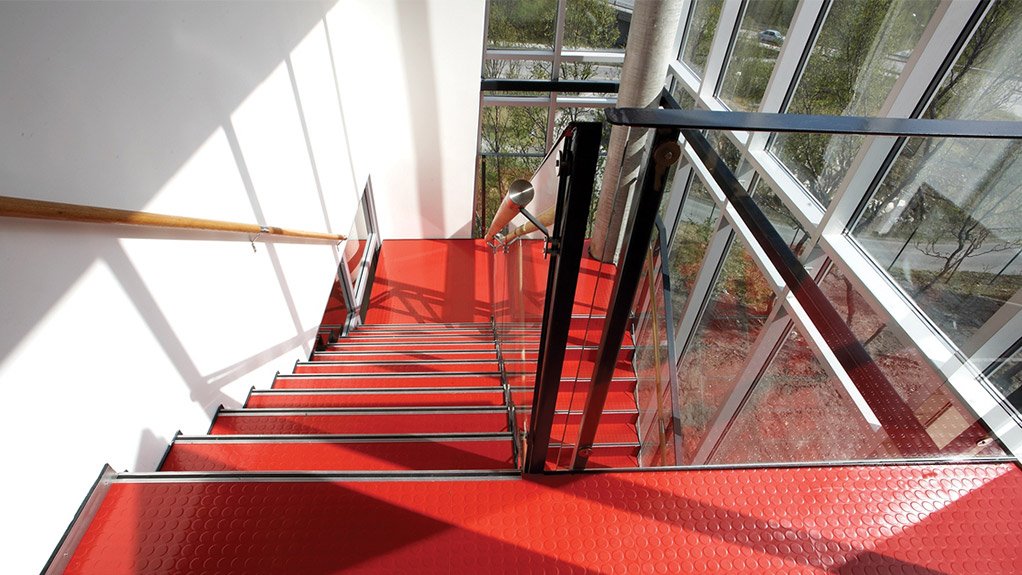Despite the growing popularity of rubber flooring in South Africa over the past five years, one of the biggest challenges in the floor-fitting industry is the lack of fitter skills, and using the correct adhesive and tools, says vinyl flooring and protection solutions specialists Polyflor South Africa (SA).
Polyflor SA marketing director Tandy Coleman-Spolander notes that it is important that recycled granular rubber floors are installed according to the manufacturer’s instructions, with the correct adhesive, by an installer who has experience in working with rubber, so that the manufacturer’s installation instructions can be carried out thoroughly to ensure a successful outcome.
In order to mitigate these challenges, Polyflor SA provides training for installers in order to educate industry on the importance of quality skills when fitting rubber floors. The company hosted an Excellence in Flooring roadshow throughout South Africa last year, during which Coleman-Spolander delivered cutting-edge information on the preparation of subfloors – a crucial step when installing vinyl or rubber floors.
She tells Engineering News that rubber flooring is an exceptionally tough and robust option that has long been used in high-traffic and industrial applications, such as airports, lifts, trains, buses, planes, transit areas and public spaces, or in areas where a specific look is required.
The rubber-studded tile floor is the most traditional and well-known, with the tiles varying in thickness from 2.7 mm to 4 mm. A recycled granular product, generally made from old vehicle tyres and other rubber products, such as the soles of (discarded) running shoes, is fast becoming a very popular type of rubber flooring. It can also contain a general-purpose synthetic rubber, produced from a copolymer of styrene and butadiene.
Some of these recycled granular products can also be used outdoors, as they are made from recycled vehicle tyres and can, therefore, withstand the elements. Recycled granular rubber floors are available in various thicknesses from 3.2 mm to 8 mm, depending on the required application.
“These pressed tiles need to be carefully installed according to the specific manufacturer’s instructions, always using the correct adhesive,” Coleman-Spolander points out, adding that special care needs to be taken with the joins, as using a heavy roller only puts pressure on the studs and will not guarantee the grip around the tile edges.
This type of flooring is primarily marketed for the health and fitness industries, as it is nonslip, resilient and provides protection in gyms when heavy weights or equipment are dropped.
It has also grown in popularity in the education and retail industries from a design and a durability perspective, notes Coleman-Spolander, indicating that its resilient and slip-resistant properties offer various design opportunities for branding and educational content on the floors.
Rubber flooring has various advantages that include easy maintenance, minimum use of chemical products and that cigarette burns or scuff marks do not readily show. The company notes that there are various different options available in rubber flooring products and they are all equally tough and long-lasting, provided they are made by reputable manufac- turers.
Edited by: Zandile Mavuso
Creamer Media Senior Deputy Editor: Features
EMAIL THIS ARTICLE SAVE THIS ARTICLE
To subscribe email subscriptions@creamermedia.co.za or click here
To advertise email advertising@creamermedia.co.za or click here















